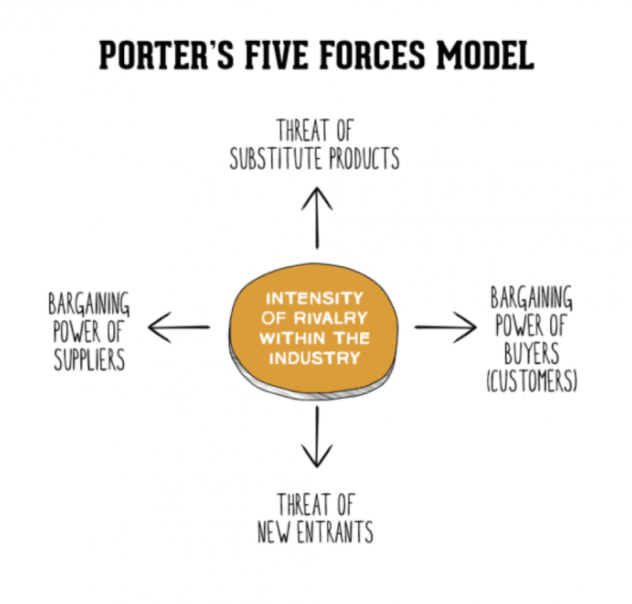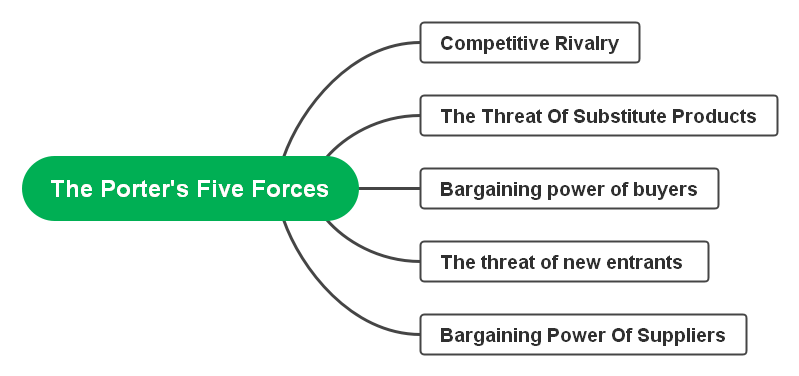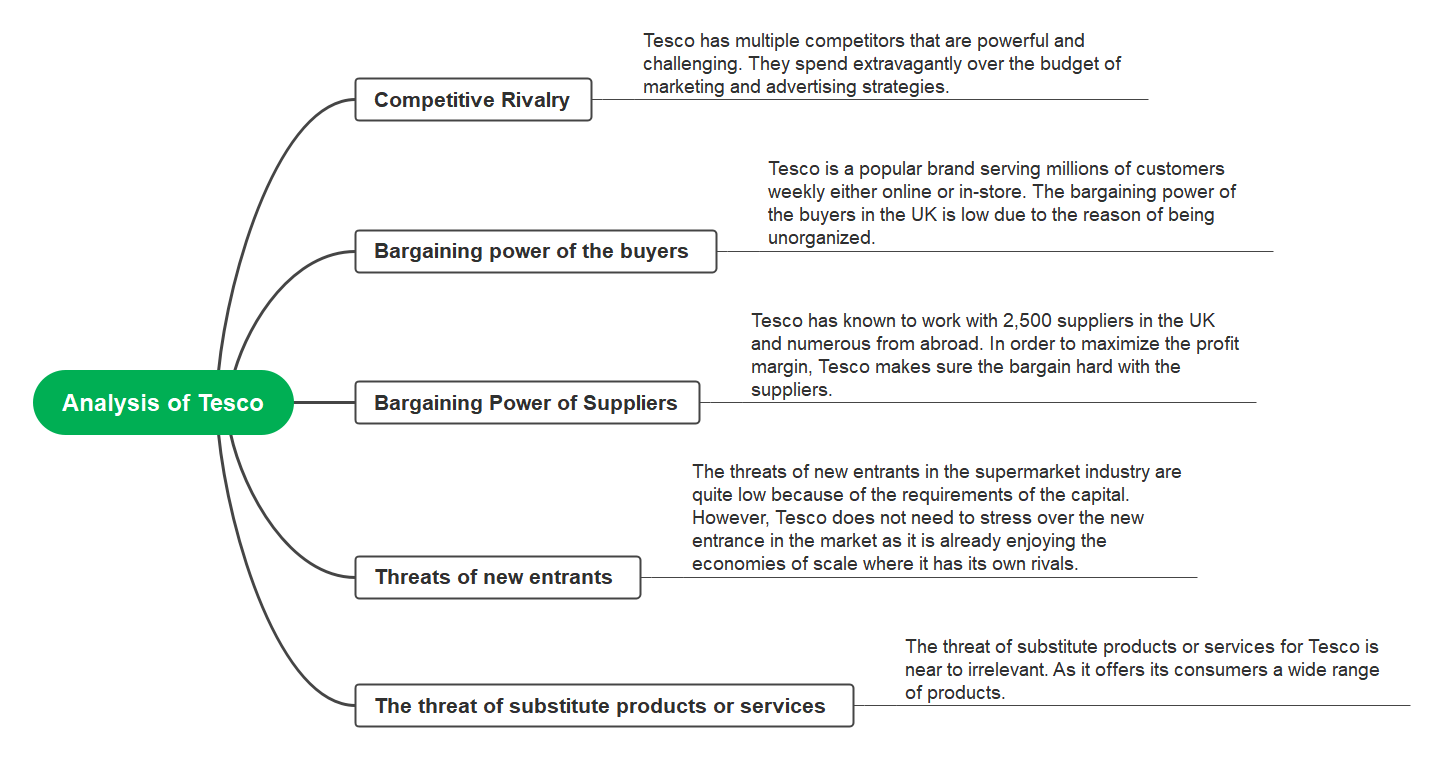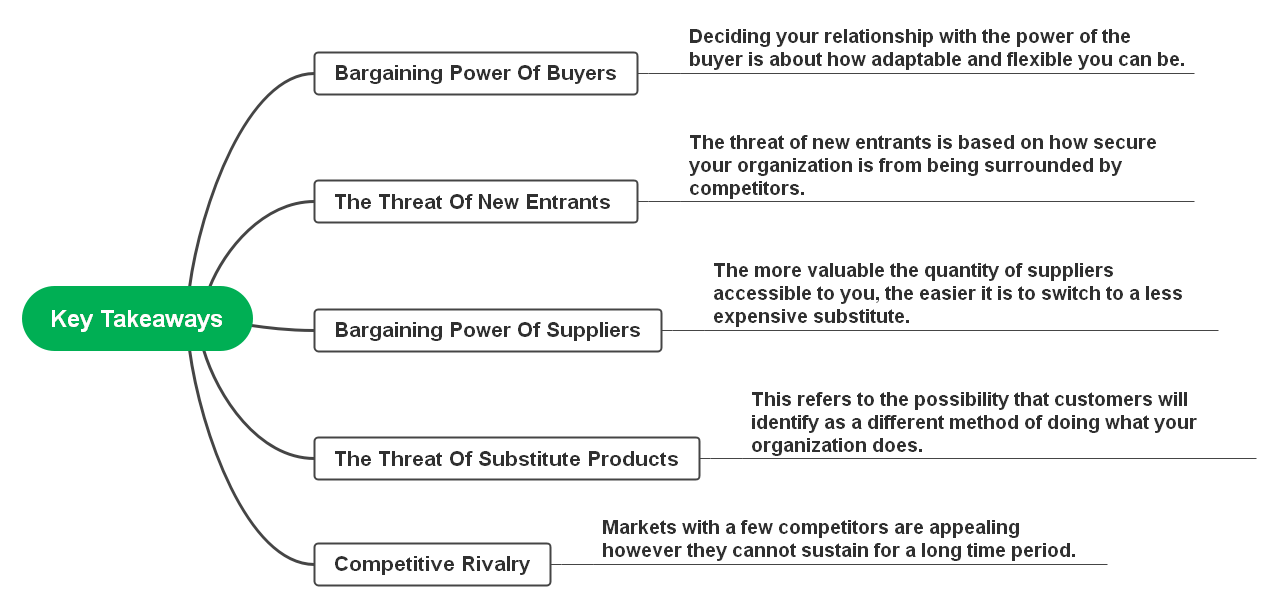Porter's Five Forces: Explained with Mind Maps
Porter's five forces is an insightful model that supports businessmen and marketers to take a gander at the balance of power in a market amid various organizations worldwide and to examine the desirability and profitability of an industrial area. Porter's five forces include competitive rivalry, threat of new entrants, bargaining power of supplies, threat of substitute products, and bargaining power of buyers. In this article, we will talk in brief about porter's five forces.
Introduction
Porter's Five Forces is a structure that assists in investigating the level of rivalry inside a specific industry. It is significantly useful if you are looking after starting a new venture or setting up a business, or maybe shifting to another industry. As per this system, competitiveness does not just come from rivals. Or maybe, the state of rivalry in an industry depends on five basic forces: the threat of new entrants, bargaining power of suppliers, bargaining power of buyers, the threat of substitute products or services, and existing industry competition. The cumulative strength of these forces determines the capable profit of an industry and also its attractiveness. If the five forces are intense, almost no organization in the industry earns appealing returns of investments. If that the forces are gentle, there is space for more significant yields.

The Porter's Five Forces
To analyze and identify the industry's strengths and weaknesses, Porter's Five Forces model is used. These five forces of analysis are commonly utilized to determine the industry's structure to identify the corporate strategy. Porter's Five Forces model is applicable over any segment of the economy to comprehend well and understand the intensity of competition within the industry to boost the company's profitability over the long run. These Porter's Five Forces are named after the professor of Harvard Business School, Michael E. Porter.

Competitive Rivalry
The first and foremost thing to review is the competition that your organization faces or might face if you are about to enter a certain industry or set up a new venture. Think both on a large scale and small size scale about the number of direct competitors to your industry and the services or products they offer compared to yours.
Markets with several competitors are appealing. However, they cannot sustain for a long time period. The highly competitive market, alternatively with numerous companies chasing the work on a similar level, lessens your power and can drive you to bring down your pricing and improve new products.

The Threat of Substitute Products
This alludes to the probability that the consumers will identify as an altered method of doing what your organization does. You may have initially considered the services you offer or products you provide those help customers. However, as innovation changes and technology advances over the long run, so do customers' problems and desires.
Look at how the life of your customer has evolved as the organization has developed. For instance, you may sell a piece of software that automates a process or synchronizes action into one stage. As users conduct changes, you can discover opportunities to refresh your item or even grow another service offering.

Bargaining Power Of Buyers
How much power do your buyers have over you? If you are unable to figure it out or do not have any idea, you need to understand that it is important for you to understand and analyze it. In case you are selling a product, their power is likely contained to customization needs or order amount. Whereas, when you are offering a service, customers are more open to negotiating.
Keep in your mind that customers are incredibly savvy when it comes to price rates, and a lot of them might also have a good knowledge of handling your rivals. Deciding your relationship with the buyer's power is about how adaptable you can be on service while keeping a legitimate position in your market.

The Threat Of New Entrants
Industries that are firmly controlled and need enormous capital investment imply that companies who are successful at gaining it can acquire serious traction in a market. Otherwise, rapidly setting up markets and minimal monetary risk means you can start producing the customers fast. However, there might be an expansion of similar products or even entire similar companies.
The threat of new entrants lies upon how protected your organization is from your competitors. Suppose you have discovered an approach to reduce expenses in the IT industry. You need to shield your organization from opponent companies or the ones imitating it who can drive down your prices.

Bargaining Power Of Suppliers
It would help if you focused as much on your costs as you do on your income regarding the brass charge. Evaluate the suppliers you depend on and the latent force they have over the service you offer or the products you possibly provide.
The more valuable the quantity of suppliers accessible, the easier and stress-free it is to shift to a less expensive substitute. In case there are not many suppliers you can work with, such as when you sell goods prepared with profoundly precise materials, the more control they have over your organization. An increase in the pricing has a quicker impact.

Analysis of Tesco
Tesco has multiple competitors that are powerful and challenging. They spend extravagantly over the budget of marketing and advertising strategies.
Tesco is a popular brand serving millions of customers weekly either online or in-store. The bargaining power of the buyers in the UK is low due to the reason of being unorganized.
Tesco has known to work with 2,500 suppliers in the UK and numerous from abroad. In order to maximize the profit margin, Tesco makes sure the bargain hard with the suppliers.
The threats of new entrants in the supermarket industry are quite low because of the requirements of the capital. However, Tesco does not need to stress over the new entrance in the market as it is already enjoying the economies of scale where it has its own rivals.
The threat of substitute products or services for Tesco is near to irrelevant. As it offers its consumers a wide range of products.

Conclusion:
This model allows you to measure and evaluate the intensity of control amongst your organization and persuasive forces all through production, from consumers to competitors to suppliers. Whenever you have run through every segment, you must roll out any improvements towards your business that you consider significant to influence power balance.
